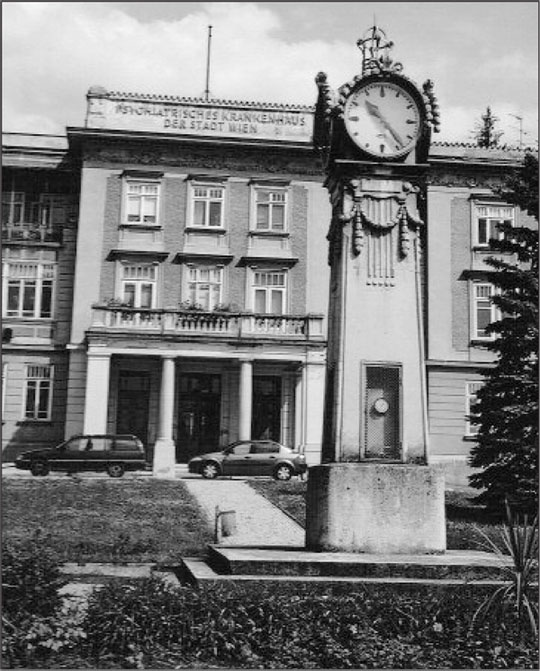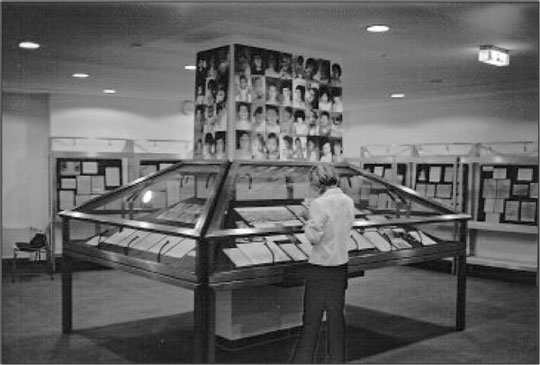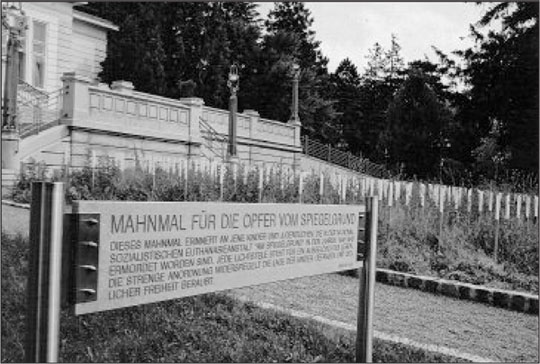Perverted eugenics: An exhibition in Vienna
Michael 2006;3:24–7
The formal background
On the 18th of August in 1939 a circular was issued in the ministry of the interior in Berlin, stating that reports should be submitted on children suffering from the following diseases: Idiocy, mongolism, microcephaly, hydrocephalus, deformities and paralyses.
The children had to be examined, and by this assessment of the diagnosis, the two main questions were a) if this was a hereditary condition, and b) to what extent the patient was likely to be able to contribute to the society when grown up.
However, considerations also were made as to the need of future care. Therefore, a lot of children with acquired or unclear diseases also were included and reported on.
The subsequent diagnosis given by the doctor could mean life or death for the patient.
«Am Steinhof» in Vienna
In the outskirts of the Austrian capital, on a beautiful hill in the 14th district of Vienna, the large hospital complex «Am Steinhof» was erected in 1907 to take care of patients with psychiatric and neurological diseases. Its architecture, especially the church, has made it an attraction and a showpiece for the Viennese art noveau style, the Jugendstil.
However, this institution which since 2000 carries the name «Otto-Wagner-Spital», has a grim history. This was one of the places where the eugenic principles of the Third Reich were mercilessly carried out during the years 1940–1945.
Not only were children killed based on their diagnoses, but they were also exposed to medical experiments where waiting for the following post mortem examinations played an important part.

The entrance to the «Otto-Wagner-Spital» 2005. (Photo: Ø. Larsen)
The activities must have been perceived as potentially insulting even to the prevalent ethics of the NS-era, as the institution was surrounded with secrecy, and a practice of giving out false or misleading information was part of the system.
When the war was over, the clinic was immediately closed. Documentary material had to a large extent been destroyed, but enough had been preserved to bring the responsible persons to court. The leader, dr. Ernst Illing, was executed and the others also got hard sentences.

The exhibition in the Vienna City Archive. (Photo: Ø. Larsen 2005)
The patient records
For some reason many of the patient records have been saved, perhaps because they were intended to serve as background material for later studies on the pathological preparations from the victims. Probably, 789 children died between September 1940 and April 1945. Records which had been stowed away have been discovered over the years, the last ones in 2003, so that documentation for 561 dead children, and for 505 surviving girls and 506 surviving boys now have been transferred to the Vienna City Archive, as a consequence of a new archive legislation, passed in 2000.
Of course this material provides information of scientific interest for historians of all kinds, but it has even now, more than half a century later, legal importance. Besides that, the material has a human side, as it gives information to those who still are wondering about the fate of family members who had died in this closed institution during the war.
The exhibition
In 2005, the City Archive of Vienna arranged an exhibition where items from the record collection were on display. Names and portraits of the deceased patients were impressing as testimonies of the cruelty, but far more the samples of drawings and writings by some of the children, showing to all that their condition could not have been that bad and have legitimated euthanasia by any ethical standards.

In the park of «Otto-Wagner-Spital» a memorial has been erected, commemorating each of the children who lost their lives. (The euthanasy department was named «Am Spiegelgrund» in 1942. Photo: Ø. Larsen 2005.)
Medicine of the Nazi-years has been covered by a series of publications. To the exhibition, the City Archive published a pamphlet, a sort of catalogue which describes the history of the wartime euthanasia project in Vienna (1), and also contains a list of works for further reading.
Literature:
Rigele B. Kindereuthanasie in Wien 1940–1945 – Krankengeschichten als Zeugen. Wien: Wiener Stadt- und Landesarchiv, 2005. 28pp. ISBN 3–902069–98–8.
professor of medical history
Institute of general practice and community health
University of Oslo
p.o.box 1130 Blindern
N-0318 Oslo, Norway
oivind.larsen@medisin.uio.no
